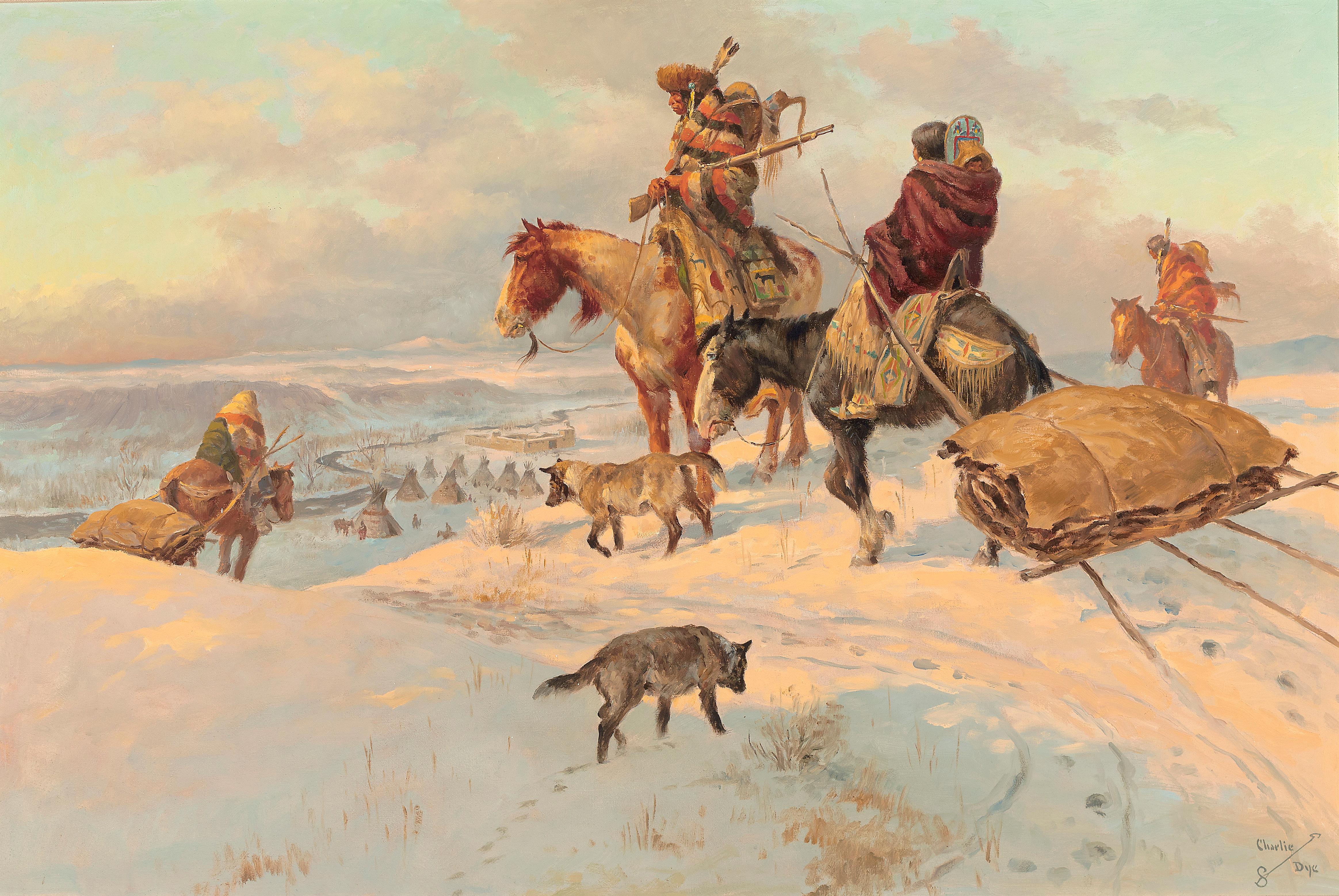
2 minute read
Charlie Dye
1906 - 1973
Born in Cañon City, Colorado, Charlie Dye grew up working on ranches, and by the time he was 20 he had worked on ranches in three states: Colorado, California and Oregon. Dye enjoyed being a ranch hand and drawing as a hobby, but along the way he also played semi-pro football, worked as a bodyguard, and even worked for a few years in movies riding his horse Old Navajo. While in the hospital recovering from injuries resulting from a horse falling on him, an old cowhand in the bed next to him showed him a book that featured then living artist Charles M. Russell’s drawings, which inspired Dye to seriously consider becoming an artist. From that time on Dye seemed to be on a fast track.
After winning a sizeable amount of money on a bet, Dye’s sister offered to match the amount if Charlie would enroll in school. Dye managed to get himself into both the Chicago Art Institute and the American Academy of Art, and within eighteen months he was working as an illustrator. By the time he was 30, he had moved to New York City and was working as an illustrator for magazines like The Saturday Evening Post, Argosy, American Weekly, and Outdoor Life.
Twenty years later, during a trip to California to visit an ailing sister, Charlie Dye noticed Western paintings in galleries and, as he said he, “decided to paint a few Western pictures and see if they would sell in the galleries. They did, and he decided to give up his career as an illustrator and move back out West to Colorado where he bought a half interest in the Colorado Institute of Art. While teaching occasionally at the Institute, Dye continued to pursue fine art in a subject area he knew very well, depicting working cowboys.
Within a few years Charlie Dye was so successful as an artist that he bought a home and studio in Sedona, Arizona, where he would live and work for the rest of his life. In Arizona he met Joe Beeler, John Hampton, and George Phippen, and in 1965 the four artists co-founded the Cowboy Artists of America, something Dye was extremely proud of.
According to James Peck, curator of collections for the Rockwell Museum of Western Art, “Dye was among the very first Western artists to combine professional art training, an illustrator’s aesthetic and Western bona fides… a model emulated many times since ….”
ROBES FOR TRADE Oil on Board 24 x 36 inches










